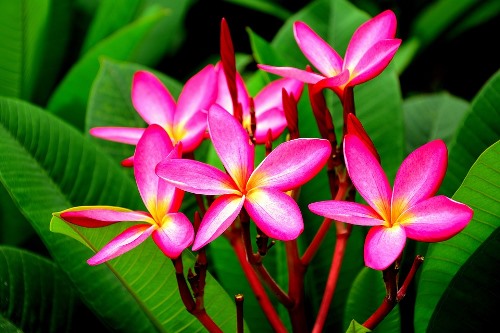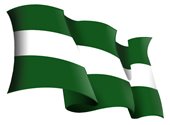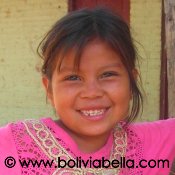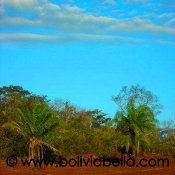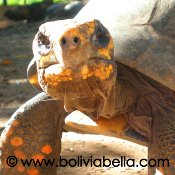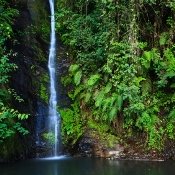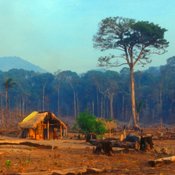|
Our Santa Cruz: Reality and Challenges
Our stateEspañol Santa Cruz, the largest state in Bolivia, covers most of the Eastern region of the country. It’s total of 364,000 Km2 are equivalente to 36.4 million hectares of territory. It borders Brazil and the Bolivian states of Beni, Cochabamba, and Chuquisaca. Its capital city, Santa Cruz de la Sierra, is the most populated and fastest growing city in Bolivia. See our maps. Administratively, Santa Cruz is divided into 15 provinces and 56 municipalities. Our territory has 5 clearly differentiated sub-regions: the Cruceño Valleys, the Chaco region, the Integrated and Expansion Area, the Chiquitania, and the Pantanal.
Our people
Our population is dynamic and enterprising and also includes mestizos (people of mixed race), migrants from all other regions of Bolivia, and foreigners. Cruceños are hospitable and the state’s slogan is “Hospitality is the Law in Santa Cruz”.
Our environment
The state is crosscut by numerous voluminous rivers with 14 river basins: Grande, Piraí, Parapetí, Yapacaní, Ichilo, San Julián, Iténez, Tucavaca, Curichi Grande-Cacéres, Paraguá, San Miguel, San Martín, and Blanco. Santa Cruz has many beautiful and very scenic areas that are home to our natural and cultural heritage, including aquifers with water reservoirs that are sufficient to satisfy both human demand and the demands of low-level irrigated agriculture.
Our wildlife
Santa Cruz has 34 landscape systems, 231 vegetation series, and 112 ecosystems. Some of our wildlife species are currently facing extinction. In Santa Cruz, 25 species of fish, 12 species of amphibians, 28 species of reptiles, 204 species of birds and 208 species of mammals are listed in various categories as endangered species.
Our protected areas
National Protected Areas are areas that have natural value of national importance, and are declared protected areas by a law or supreme decree. These are part of the National Protected Areas System (SNAP, in Spanish) and are managed by the National Protected Areas Service. Departmental (State) Protected Areas are of state-level natural importance and have been declared protected areas by the State Government through specific issued standards, and their creation or establishment must be justified and backed by technical-scientific studies. Municipal Protected Areas are those that have outstanding ecological value, and have been identified and acknowledged by the Municipal Governments as such. They are declared to be of municipal interest, and are created or established by a Municipal Ordinance or a similar or superior norm.
Our natural resources
The State of Santa Cruz has great expanses of fertile soil for agricultural use and a tropical climate that stimulates productive activities. There are 39 oil and gas fields assigned to 7 operating companies involved in exploration and extraction activities. The State of Santa Cruz has 10 million hectares of forests rich in tropical and subtropical species as well as non-lumber resources. Of these, 4.7 million hectares are covered by forest management plans and of the latter, 1.4 million hectares are under voluntary forest certification. Bolivia is the world’s number one supplier of certified wood. An average of 500,000 mts.3 of wood are extracted from managed forests each year, involving 50 different forest species, for a value of about 40 million dollars. There are 1100 small, mid-sized and large forest industries that generate 3800 direct jobs, producing wood for construction and furniture for the domestic and export markets. The latter has an average annual value of 64 million dollars. There is some sustainable use of wildlife species through breeding areas. Honey is widely produced, fisheries are popular, and reptiles, amphibians, mammals and birds and fowl are also used for consumption. 1.1 million hectares of land are apt for agricultural and livestock use and 8.5 million are moderately apt for these activities. On a surface area of 2.4 million hectares, food is produced for the entire country including corn, rice, potatoes, and products for export such as soybeans, sugar cane, sunflowers, and others that generate approximately 560 million dollars per year. Santa Cruz alone produces 64% of Bolivia’s food. 2.4 million heads of cattle are raised on 9.3 million hectares of forests and pampas (savannas), thus guaranteeing the availability of meat and milk for the entire population. Over 207 million dollars have been invested in the extraction and commercialization of various mineralogical resources such as gold, iron, amethysts, nickel, chrome, silica, and limestone. The cattle and dairy industries supply both internal and export markets amounting to over 28 million dollars. The poultry industry supplies 80 million chickens and 720 million eggs per year. Santa Cruz is home to 10.5% of the countries proven natural gas reserves and 10.7% of probable gas reserves, as well as 7.2% of the countries proven and probably oil reserves.
Our concerns
The most seriously affected river basins are the Grande (also known as Guapay), the Piraí, the Parapetí and San Julian. Floods and contamination of surface waters due to solid and liquid waste being dumped into the rivers due to domestic, industrial and mining use has led to a greater recurrence of flooding and, consequently, the loss of water species. One phenomenon that is causing great concern is the fact that the apex of the alluvial fan has retreated by 124 kilometers along the Grande River between 1986 and 2008. At a rate of 5.6 kilometers per year, the fan will reach Pailón in the next 20 years and agricultural areas have been lost. Flooding due to overflow and changes in river beds has caused great economic loss and damage to agricultural production, cultivated areas, infrastructure, and inhabitants. This is due to the expansion of the agricultural frontier toward the margins, the extraction of soil and sand from riverbeds and streams, and the high volume of transport of suspended sediments from higher altitude basins. Single-crop planting has led to low crop yield, as has planting during inadequate seasons, using incorrect crop densities, inadequate or untimely pest and disease control, soil compacting, nutrients that are not replaced, and a high number of properties that do not have natural wind barriers and are exposed to strong winds that cause damage to the soil, soil erosion, and mechanical damage. 90% of the forest fires that destroy wildlife, flora and fauna are caused by humans who have been careless while using slash-and-burn techniques to clear land for pasturing and cultivation, bonfires used for cooking in forested areas by hunters and tourists, burning of trash, and others. Environmental education, research, control, and inspection organisms are weak in promoting sustainable development practices, and public investments is inadequate and does not prioritize support for production, management and control over the use of natural resources. Traffic is chaotic in large cities, which are also contaminated with garbage, strident noise pollution, vehicular and industrial gases, and a proliferation of road signs.     |
